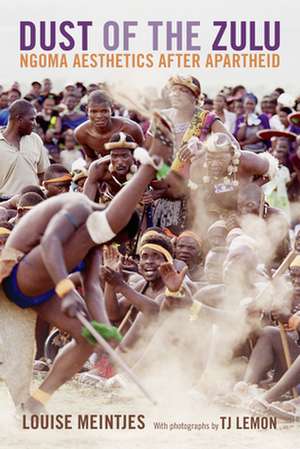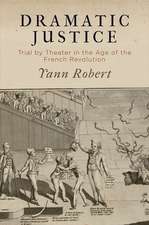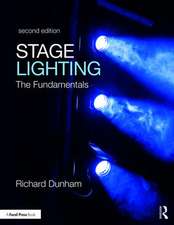Dust of the Zulu – Ngoma Aesthetics after Apartheid
Autor Louise Meintjes, Tj Lemonen Limba Engleză Paperback – 22 aug 2017
Louise Meintjes is Associate Professor of Music and Cultural Anthropology at Duke University and the author of Sound of Africa!¿Making Music Zulu in a South African Studio, also published by Duke University Press.
TJ Lemon is an award-winning photojournalist based in Johannesburg.
TJ Lemon is an award-winning photojournalist based in Johannesburg.
| Toate formatele și edițiile | Preț | Express |
|---|---|---|
| Paperback (1) | 304.10 lei 43-57 zile | |
| MD – Duke University Press – 22 aug 2017 | 304.10 lei 43-57 zile | |
| Hardback (1) | 639.02 lei 43-57 zile | |
| MD – Duke University Press – 22 aug 2017 | 639.02 lei 43-57 zile |
Preț: 304.10 lei
Nou
Puncte Express: 456
Preț estimativ în valută:
58.19€ • 60.92$ • 48.15£
58.19€ • 60.92$ • 48.15£
Carte tipărită la comandă
Livrare economică 07-21 aprilie
Preluare comenzi: 021 569.72.76
Specificații
ISBN-13: 9780822362654
ISBN-10: 0822362651
Pagini: 352
Ilustrații: 142 illustrations
Dimensiuni: 167 x 229 x 15 mm
Greutate: 0.57 kg
Editura: MD – Duke University Press
ISBN-10: 0822362651
Pagini: 352
Ilustrații: 142 illustrations
Dimensiuni: 167 x 229 x 15 mm
Greutate: 0.57 kg
Editura: MD – Duke University Press
Cuprins
Preface ix
Acknowledgments xi
Introduction. The Politics of Participation in Ngoma Song and Dance 1
1. Turning to Be Kissed: Praise, Flirtation, and the Work of Men 28
2. The Unwavering Voice: Affect, Eloquence, and the Moral Anger of Men 62
3. Feet of the Centipede: Military Aesthetics and the Politics of Reconciliation 94
4. To Quell the Dancer's Dust: Singing Violence during South Africa's Transition 124
5. The Crossing: World Music and Ngoma at Home 151
6. Dancing Around Disease: Silence, Ambiguity, and Brotherhood 182
7. The Digital Homestead: Having a Voice and the Sound of Marginalization 210
8. Brokering the Body: Culture, Heritage, and the Pleasure of Participation 240
Closing. Ngoma's Masculinity, South Africa's Struggle 266
Notes 273
References 307
Index 329
Acknowledgments xi
Introduction. The Politics of Participation in Ngoma Song and Dance 1
1. Turning to Be Kissed: Praise, Flirtation, and the Work of Men 28
2. The Unwavering Voice: Affect, Eloquence, and the Moral Anger of Men 62
3. Feet of the Centipede: Military Aesthetics and the Politics of Reconciliation 94
4. To Quell the Dancer's Dust: Singing Violence during South Africa's Transition 124
5. The Crossing: World Music and Ngoma at Home 151
6. Dancing Around Disease: Silence, Ambiguity, and Brotherhood 182
7. The Digital Homestead: Having a Voice and the Sound of Marginalization 210
8. Brokering the Body: Culture, Heritage, and the Pleasure of Participation 240
Closing. Ngoma's Masculinity, South Africa's Struggle 266
Notes 273
References 307
Index 329
Notă biografică
Descriere
Louise Meintjes traces the history and the political and aesthetic significance of ngoma, a competitive form of dance and music that emerged out of the legacies of colonialism and apartheid in South Africa, showing how it embodies Zulu masculinity and the expanse of South Africa's violent history.




















